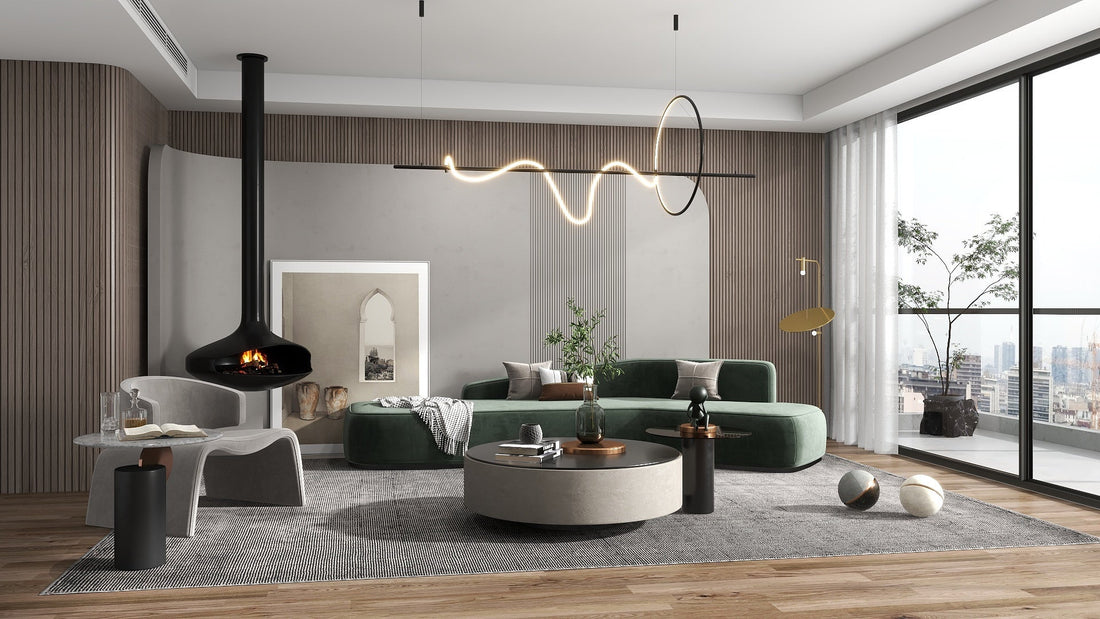
From Imagination to Reality: The Latest Breakthroughs of Smart Furniture
Share

In today’s rapidly advancing technological landscape, the smart furniture industry is redefining the way we interact with our living spaces. Beyond traditional aesthetics and functionality, smart furniture is now seamlessly integrating cutting-edge technologies such as IoT, Artificial Intelligence (AI), sustainability, augmented reality (AR), and health-centric features. This fusion not only elevates user experiences but also reflects the dynamic evolution of modern homes into interconnected, intelligent spaces.
1. Integration of IoT
The integration of Internet of Things (IoT) technology has revolutionized the smart furniture industry by creating a seamless ecosystem where furniture connects with other smart devices. From adjusting seating positions based on body posture to managing room environments, IoT enables a more intuitive, efficient living experience. Companies like Sleep Number Corporation are leading this charge, offering smart beds that adapt to users’ unique needs—whether it’s optimizing sleep settings or accommodating specific health conditions like pregnancy or recovery from injury. This advancement enhances comfort, promotes sustainability, and creates a fully connected home environment.
2. Shift to Sustainability and Eco-friendly Products
The demand for eco-conscious solutions is shaping the smart furniture landscape, with a growing focus on sustainable materials and reduced carbon footprints. Manufacturers are adopting environmentally responsible practices, exemplified by companies like Humanscale, which introduced the Path sustainable task chair. Crafted from recycled materials, such as reclaimed fishing nets and waste plastics, these pieces demonstrate how sustainability and style can coexist. The Path chair not only supports the environment but also provides functionality with intuitive, adaptive features, making it a compelling addition to modern interiors.
3. Augmented Reality (AR) in Shopping Experience
Augmented reality (AR) is revolutionizing how consumers interact with smart furniture, offering an immersive shopping experience that bridges the gap between physical and digital spaces. By integrating AR technology, retailers can empower shoppers to visualize furniture within their homes, reducing uncertainty and enhancing decision-making. SES-imagotag’s partnership with leading furniture retailers showcases the transformative potential of AR. This innovation streamlines the shopping process, boosts in-store engagement, and elevates the overall customer experience, positioning smart furniture as a key player in the future of retail.
4. Multifunctional Designs
The demand for multifunctional furniture continues to rise, with innovative designs that maximize space utilization and adaptability. Companies like Ebarza are introducing futuristic furniture collections that transform from beds into desks, tables, and more, providing unparalleled versatility for modern living spaces. These adaptable designs cater to evolving lifestyles, allowing users to repurpose rooms seamlessly—transforming workspaces into leisure zones or children’s play areas. Multifunctional furniture redefines how space is used, blending practicality with elegant design.
5. Health and Wellness Features
Health-focused innovations in smart furniture are addressing the growing awareness of the link between well-being and living environments. Products like Flexsteel’s Zecliner are at the forefront, offering holistic solutions for improving sleep quality and overall comfort. From advanced ambient lighting to cooling Technogel pillows, these health-centric designs prioritize relaxation, recovery, and rejuvenation. This trend reflects a broader movement within the smart furniture industry to create spaces that nurture health and support users’ well-being.
Summing Up
The smart furniture industry is advancing rapidly, driven by groundbreaking innovations in technology, sustainability, and design. From IoT integration and multifunctional designs to health-focused features and augmented reality, these advancements are transforming furniture into an essential part of interconnected, intelligent homes. As these trends continue to evolve, the potential for smart furniture to enhance our daily lives, reduce environmental impact, and redefine living spaces is truly exciting. Investors looking to tap into this dynamic sector can anticipate significant growth opportunities, with innovations poised to shape the future of modern living.